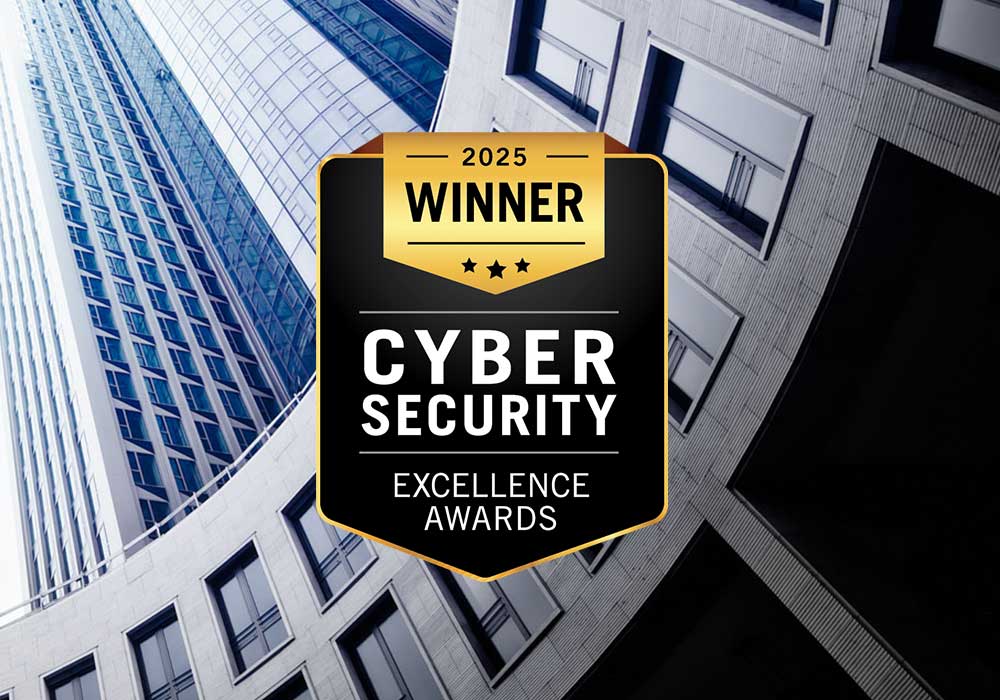
Accenture’s 2023 State of Cybersecurity Resilience report found that 53% of organizations require cyber security protocols before deploying any solution. This is unsurprising, considering how the World Economic Forum discovered that 95% of cyber security issues were caused by human error, which means they could have been avoided.
With cyberattacks growing in complexity and frequency, employee behavior remains one of the most unpredictable risk factors in cyber security. Security awareness training, or SAT, is a proactive, strategic approach to protecting data and mitigating this risk.
.png)
This article explores seven key benefits of Security Awareness Training (SAT) for businesses and how a well-structured program can empower IT leaders to build a security-focused organization.
1. Create a security-first culture
Cyber security needs to be a part of every team member’s daily routine. SAT helps build this mindset through training methods like gamification, simulations, and microlearning modules. It also encourages employees to collaborate with IT teams rather than circumvent protocols, helping reduce the prevalence of shadow IT.
With a well-executed SAT program, employees become more confident, proactive, and vigilant against threats like social manipulation attacks. This ultimately creates a workforce that acts as an extension of your security infrastructure.
Plus, a culture rooted in security awareness improves incident response times, reduces error rates, and supports regulatory compliance across departments. When considering a managed security awareness training program, be sure to look for a solution that is tailored to your company-specific risks and employee roles, ensuring that security awareness becomes part of your organizational DNA.
2. Identify and mitigate internal risks
As mentioned, human error accounts for the majority of all recorded cyber security issues. Data from a recent study indicates that 68% of data breaches involve a person making an error or falling victim to social engineering attacks. Here are the most common employee mistakes when it comes to cyber security:
- Poor password hygiene: Using weak, reused, or easily guessable passwords that make it easier for attackers to gain unauthorized access to systems and data.
- Misdirected emails: Accidentally sending sensitive information to the wrong recipient can lead to data leaks and compliance violations.
- Clicking on phishing links: Falling for fraudulent emails or messages that trick users into clicking malicious links.
- Using unauthorized apps or devices: Accessing company data from personal devices or installing unapproved software, which can bypass security controls and expose sensitive information to risk.
- Ignoring software updates: Delaying or skipping security patches and updates, leaving systems vulnerable to known exploits that hackers actively target.
Social engineering, according to IBM, is a leading cybercrime tactic that tricks or manipulates people into doing things they normally wouldn’t. For example, a cybercriminal may imitate the voice of a family member over the phone, claiming they’d gotten into an accident and need money quickly.
Social engineering preys on human emotions and motivations to elicit a response. Here are the most popular social engineering attacks and how they’re used:
- Phishing: This involves deceptive emails or messages designed to trick users into clicking malicious links, downloading malware, or revealing sensitive information. For example, an employee receives an email that appears to come from Microsoft Office 365 support, urging them to “verify their credentials” to avoid account suspension. The link leads to a spoofed login page, capturing their username and password.
- Baiting: Something enticing (like free software or a USB drive) is offered to get users to compromise their security. Imagine finding a USB labeled “Annual Bonus Reports” in a company break room. However, when you plug it into your work computer, you unknowingly launch malware that compromises the network.
- Tailgating (also known as Piggybacking): An attacker gains unauthorized physical access to restricted areas by following closely behind an authorized person. Think of someone sneaking into an automatic lock door just after an authorized person enters to gain access to a space.
- Scareware: Malicious software or pop-ups that deceive users into believing their system is infected, prompting them to install fake security software or provide sensitive information. For example, while browsing, an employee encounters a pop-up warning that their computer is heavily infected. The pop-up urges immediate action by downloading a provided "antivirus" tool, which is actually malware.
- Watering hole attack: Attackers compromise a legitimate website frequently visited by a target group, embedding malicious code to infect visitors. For example, a website’s vulnerabilities can be exploited to deliver malware that steals visitors’ sensitive information.
Social engineering is effective because it preys on human instincts like urgency, authority, and curiosity. That’s why information security awareness training must go beyond slide decks and annual check-the-box sessions and actually test employee behavior under pressure. Behavioral conditioning through repetition (especially with realistic business email compromise (BEC) scenarios and voice phishing simulations) helps staff instinctively pause, verify, and report rather than respond impulsively.
3. Cost savings
A cyberattack can devastate any company, no matter the size. According to Cybercrime Magazine, cybercrime all over the world is estimated to cost the global economy a whopping $10.5 trillion by the end of 2025.
Now compare potential cyberattack costs with those of a managed security awareness training program. Typically, an SAT program is a tiny fraction of the cost of a single incident, especially when deployed across hundreds or thousands of users. When training leads to even one avoided breach, the return on investment is immediate and substantial.
Beyond breach prevention, SAT also contributes to lower cyber insurance premiums. Providers are increasingly factoring SAT adoption into underwriting decisions. Companies with consistent employee cyber security awareness training and phishing simulations often qualify for better coverage terms or lower premiums because they’ve actively reduced their risk profile.
4. Minimize legal exposure
In a breach scenario, how well you’ve trained your employees could make or break your legal defense. According to the Center for Internet Security, courts and regulators often look for proof of “reasonable cyber security measures.” This includes whether employees received adequate training to avoid the breach, especially if the incident can be proven to be caused by human error. A company that can demonstrate a documented SAT program with completion records, test scores, and simulated phishing exercises stands on much firmer legal ground than one that can’t.
Take two identical companies that are the same size, in the same industry, and facing the same breach. The one that can show a consistent training cadence and audit trails can strengthen its defense against regulatory penalties, class-action liability, or shareholder lawsuits. Claro’s MSAT offering ensures this protection by:
- Logging training completion and quiz results
- Offering audit-ready compliance reports
- Documenting all content delivery formats (video, email, simulation)
This creates a verifiable defense posture that enhances your protection in case an attack occurs. It goes hand in hand with saving costs by helping you potentially avoid legal bills and fines.
5. Improve customer confidence and satisfaction
Security-conscious clients are loyalty-driven clients. Data from McKinsey states that 87% of consumers would stop doing business with a company if they had concerns about the organization’s security. In contrast, businesses that prioritize trust and transparency are more likely to keep their customers.
Security awareness training plays a direct role in this. It signals to partners, regulators, and customers that your organization treats its cyber security strategy as a shared responsibility. This is particularly important in industries like healthcare, finance, and logistics.
6. Increase employee engagement
When done right, SAT actually boosts employee engagement. This is because equipping and empowering employees with the tools they need is essential to consistently produce quality work and maintain a good working environment. However, data from Gallup shows that only 35% of employees say they have everything they need for work. SAT contributes to helping employees become more engaged within the organization by:
- Giving employees a sense of ownership over company safety
- Empowering them with real-life, practical skills
- Making them feel like part of the solution, not the problem
7. Improve incident response
In a real security incident, minutes matter. According to IBM, companies that identified and contained breaches in less than 200 days saved $1.39 million compared to those who didn’t. The longer a threat goes unreported, the greater the damage. Security awareness training significantly reduces that lag time. Also, well-trained employees are more likely to:
- Spot unusual behavior or phishing attempts quickly
- Report to the right person or system immediately
- Avoid panic or guesswork during incident response
- Prevent cyberattacks from happening by shutting them down from the start
- Implement what they learned during employee security awareness training
SAT also supports broader incident readiness, especially when paired with tabletop exercises and phishing simulations.
Create a security-first culture in your organization with Claro Enterprise Solutions
Human involvement may be your organization’s biggest vulnerability, but it can also become your greatest asset. Security awareness training turns employees from potential risks into proactive defenders. It increases resilience, reduces legal and financial exposure, builds customer trust, and strengthens your entire cyber security posture. However, not all SAT programs are created equal.
Claro’s fully-managed Security Awareness Training solution delivers measurable results. The platform is backed by expert-designed modules, continuous updates, real-world simulations, and detailed compliance reporting. This strategic investment in your people, your brand, and your future will help secure your data. Reach out today for a smarter, safer workforce.
Insights
All the solutions for your business sector
Experience best-in-breed technology solutions.
Cyber Security

Cloud Services

Internet of Things

Managed Network

Managed IT Services

.png)



.png)





